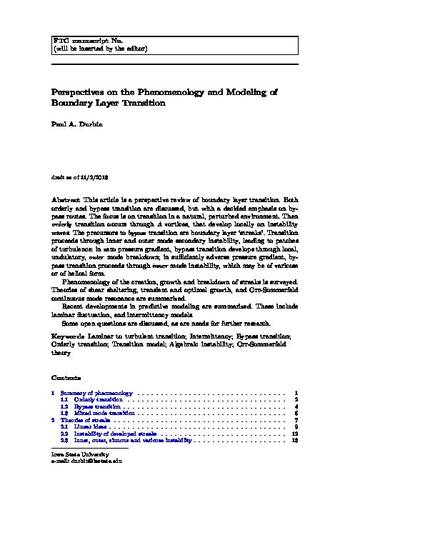
This article is a perspective review of boundary layer transition. Both orderly and bypass transition are discussed, but with a decided emphasis on bypass routes. The focus is on transition in a natural, perturbed environment. Then orderly transition occurs through Λ vortices, that develop locally on instability waves. The precursors to bypass transition are boundary layer ‘streaks’. Transition proceeds through inner and outer mode secondary instability, leading to patches of turbulence: in zero pressure gradient, bypass transition develops through local, undulatory, outer mode breakdown; in sufficiently adverse pressure gradient, bypass transition proceeds through inner mode instability, which may be of varicose or of helical form. Phenomenology of the creation, growth and breakdown of streaks is surveyed. Theories of shear sheltering, transient and optimal growth, and Orr-Sommerfeld continuous mode resonance are summarized. Recent developments in predictive modeling are summarized. These include laminar fluctuation, and intermittency models. Some open questions are discussed, as are needs for further research.
Available at: http://works.bepress.com/paul_durbin/23/

This is the peer-reviewed version of the following article: Durbin, Paul A. "Perspectives on the Phenomenology and Modeling of Boundary Layer Transition." Flow, Turbulence and Combustion 99, no. 1 (2017): 1-23, which has been published in final form at DOI: 10.1007/s10494-017-9819-9. This article may be used for non-commercial purposes in accordance with Wiley Terms and Conditions for Self-Archiving. Posted with permission.